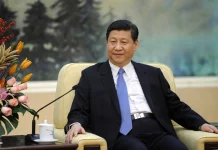BEIJING: Thirty-six years ago, Hu Guohua queued overnight outside China’s patent office to apply for a patent. The next day, April 1, 1985, China’s Patent Law came into effect, and the office received more than 3,400 applications.
Eight months later, Hu got a patent certificate. Newspapers splashed photos of the spectacled engineer, who became the country’s first patent rights holder.
“The patent system has recognized the value of knowledge, galvanized innovation and fostered development,” Hu said in a recent interview. In 1966, after graduating from Shanghai-based Fudan University, Hu became an optical researcher at an institute under the former Ministry of Aerospace Industry in Beijing. At the time, most people were not aware of the concept of the intellectual property (IP). With recommendation letters, researchers could get access to each other’s inventions easily.
Such practices helped popularize technologies, but could not protect the work and ideas of inventors, which would hinder innovation in the long run, Hu said.
When he learned that China would implement the Patent Law, he decided to try for a patent. Hu learned that patented inventions should be novel, creative and practical.
“At that time, many of my inventions were made public through exhibitions and academic papers, so they were no longer novel. Therefore, I chose an invention being developed, a color display device to help analyze satellite images.” Hu’s patent certificate has been in the National Museum of China collection since the patent expired. He kept a copy: “This is an important record of my innovative work.”
He started a company in Beijing in 1986 and now has patent rights on at least 10 inventions, including laser anti-counterfeiting labels for tobacco products and laser surgery equipment for treating myopia. – Agencies





